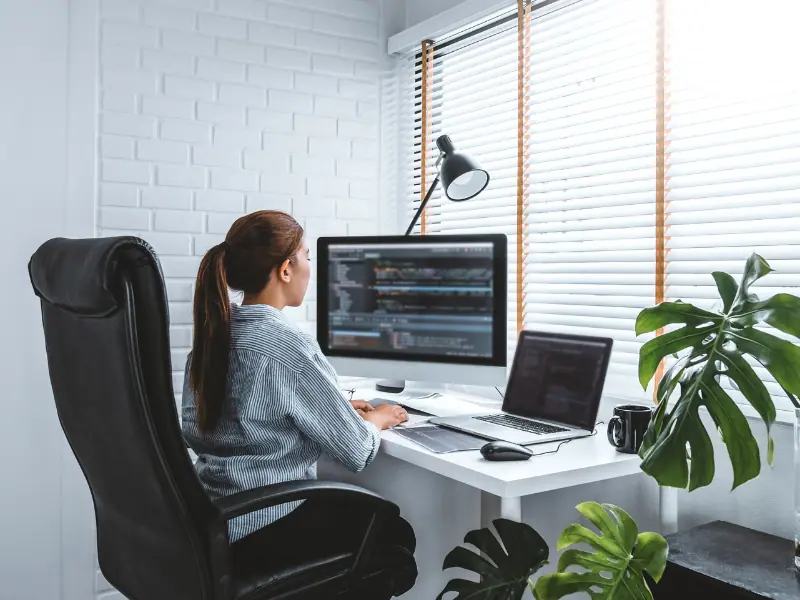
The design of your home office workplace plays a crucial role in your health, productivity and general well-being. A well-designed home office workplace can help to reduce back pain, improve concentration and increase motivation.
You should consider the following aspects when designing your home office workstation:
A well-designed working environment can lead to improved health, higher productivity and increased job satisfaction. By implementing effective workplace design methods, you can realize your full potential when working from home.
For employers, well-designed remote working environments offer the opportunity to reduce costs as less physical office space is required. In addition, flexible working arrangements can increase employee retention and satisfaction, which in turn reduces turnover and makes it easier to recruit talented professionals.
For employees, an optimal home office workplace design means a better work-life balance, as they can work more flexibly and spend less time and stress on commuting. This contributes to a higher quality of life and enables employees to better reconcile their professional and personal commitments. In addition, well-designed working environments can promote creativity and innovation by creating an inspiring atmosphere that stimulates thought processes and increases motivation.
You are currently viewing a placeholder content from Brevo. To access the actual content, click the button below. Please note that doing so will share data with third-party providers.
More InformationYou need to load content from reCAPTCHA to submit the form. Please note that doing so will share data with third-party providers.
More Information